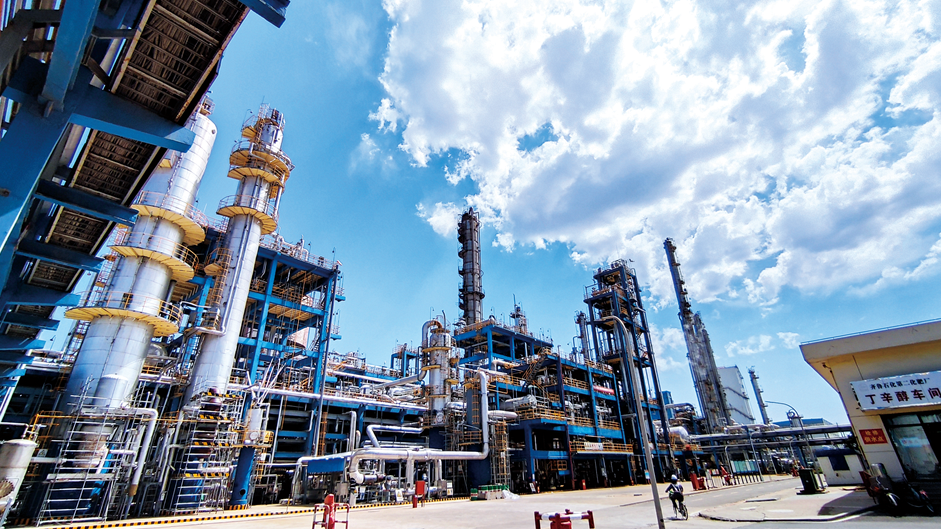
Sinopec Qilu Petrochemical captures carbon dioxide and transmits it to the Sinopec Shenli Oilfield to help boost oil recovery. /Sinopec Group
Sinopec Qilu Petrochemical captures carbon dioxide and transmits it to the Sinopec Shenli Oilfield to help boost oil recovery. /Sinopec Group
China's longest carbon dioxide transportation pipeline has been put into operation in Zibo City, eastern China's Shandong Province.
The 109-kilometers-long pipeline serves the Qilu-Shengli Oilfield CCUS project, the country's first megaton-scale carbon capture, utilization and storage project, setting an example for such projects to reduce carbon emissions.
The project will reduce 1.7 million tonnes of carbon emission annually, equivalent to planting 9 million trees.
The carbon dioxide captured from the industrial exhaust gas at the Qilu petrochemical refinery will be refined, liquefied and then transported to be reinjected into another area of the oil field to help boost oil output, turning the waste exhaust into something valuable.
Before the pipeline was put into use, the liquefied carbon dioxide was transported via vehicles, a low-efficiency approach that attracts an added cost. The pipeline has saved 40,000 vehicular trips annually and 2 million standard cubic meters in gas consumption.